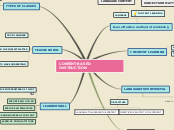av omar pachon för 6 årar sedan
580
2 CHAPTER. THE TREE OF KNOWLEDGE
The text delves into two theories explaining the emergence of new language capabilities in humans. One theory attributes this to the flexibility of combining multiple sounds and signals to create an infinite variety of sentences.









